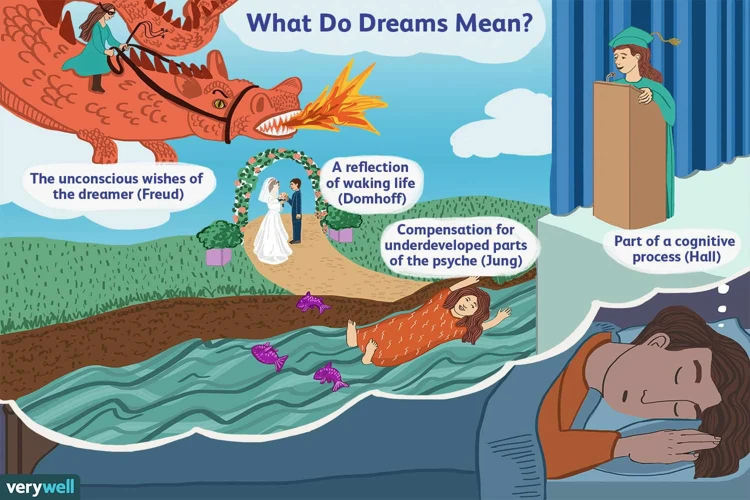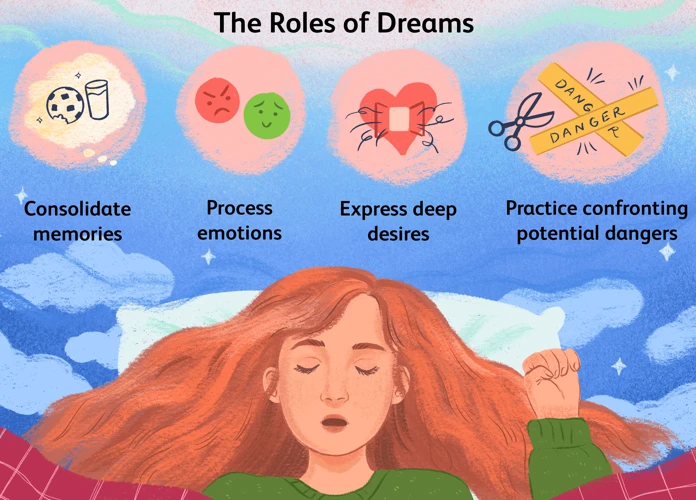Have you ever woken up from a dream feeling an overwhelming sense of sadness? Dreams have a way of tapping into our deepest emotions, and sadness is no exception. Unraveling the hidden messages behind sadness in dreams can provide valuable insight into our subconscious thoughts and feelings. In this article, we will explore the symbolism of sadness, the hidden meanings behind it, and how to interpret specific situations. So, if you’re ready to delve into the enigmatic world of dreams and uncover the intriguing messages they hold, keep reading.
The Symbolism of Sadness

The Symbolism of Sadness in dreams goes beyond surface-level emotions and holds a deeper meaning within our subconscious minds. Sadness is often depicted in dreams as tearful moments, gloomy atmospheres, or desolate landscapes. These common depictions of sadness serve as symbolic representations of the emotional turmoil or pain we may be experiencing in our waking lives. The emotional context surrounding sadness in dreams is crucial in deciphering its symbolic meaning. Whether it is a profound sense of grief or a lingering feeling of melancholy, understanding the specific emotions associated with sadness can provide valuable insights.Exploring the surrounding elements in dreams can also contribute to unraveling the symbolism of sadness. For example, the presence of rainy weather, gray colors, or an overall somber ambiance can further accentuate the feelings of sadness. By analyzing these elements along with emotional context, we can gain a more comprehensive understanding of the hidden messages behind sadness in dreams.
1. Common Depictions of Sadness
Common depictions of sadness in dreams can manifest in various ways, offering insight into the subconscious mind. Tearful moments are a prevalent symbol of sadness, where individuals find themselves weeping uncontrollably or witnessing others in tears. These tearful scenes often symbolize deep emotional pain or unresolved grief. Gloomy atmospheres filled with dark clouds, heavy fog, or dreary landscapes are another common depiction of sadness in dreams. The somber ambiance reflects the emotional state of the dreamer, hinting at feelings of isolation or despair. Additionally, desolate landscapes, such as abandoned cities, empty streets, or deserted places, can represent a sense of loneliness and emptiness associated with sadness. By recognizing and analyzing these common depictions, we can begin to unravel the deeper meaning and messages behind the sadness experienced in dreams.
2. Analyzing the Emotional Context
Analyzing the emotional context surrounding sadness in dreams is essential for unraveling its symbolic meaning. The range of emotions associated with sadness can vary widely, from profound grief and loss to a general feeling of melancholy or longing. By identifying the specific emotions felt within the dream, we can gain insight into the underlying emotions we may be experiencing in our waking lives. It is important to pay attention to the intensity of these emotions in the dream, as it can reflect the intensity of our feelings in reality. For example, if the sadness in the dream is overwhelming and consuming, it may indicate a deeper emotional turmoil or unresolved grief. On the other hand, if the sadness is more subtle or fleeting, it may represent a general sense of dissatisfaction or longing for something in our lives. By reflecting on the emotional context, we can start to connect the dots between our dreams and our waking emotions, leading to a deeper understanding of ourselves and our emotional state.
3. Exploring the Surrounding Elements
Exploring the Surrounding Elements in dreams is essential when deciphering the symbolism of sadness. Paying attention to the details can provide valuable insights into the hidden messages behind the dream. One aspect to consider is the environment in which the sadness is portrayed. Is it a familiar place or a strange and unfamiliar setting? The setting can indicate the source or context of the sadness. Additionally, take note of the weather conditions in the dream. Rain, storms, or dark clouds may symbolize a sense of gloominess or emotional turbulence. The presence of specific objects or people can also carry significant meaning. For instance, the presence of a deceased loved one in the dream may suggest unresolved grief or longing. Exploring the surrounding elements in conjunction with the emotional context can provide a more comprehensive interpretation of the sadness experienced in dreams.
The Hidden Meanings Behind Sadness

The Hidden Meanings Behind Sadness in dreams offer profound insights into our inner thoughts, emotions, and experiences. One of the significant interpretations of sadness in dreams is the reflection of unresolved grief. The dream may serve as a way for our subconscious mind to process and heal from past losses or traumas. Additionally, sadness can signify repressed emotions and inner turmoil that we may be suppressing in our waking lives. It acts as a gentle nudge to acknowledge and address these emotions to achieve emotional well-being. Recognizing and understanding the hidden meanings behind sadness in dreams can also reveal warning signs of underlying depression. It is important to pay attention to recurrent dreams of sadness as they may indicate a need for professional help and support. By delving into the hidden layers of sadness in dreams, we can gain valuable insights into our psychological and emotional state, paving the way for personal growth and healing.
1. Reflection of Unresolved Grief
Unresolved grief can manifest as sadness in dreams. When we experience a loss or go through a significant life change, our subconscious mind may hold onto feelings of grief that have yet to be fully processed. In dreams, sadness can serve as a reflection of this unresolved grief. It may be a way for our subconscious to remind us that there is still emotional healing to be done. The dream imagery during these instances may include symbols that are linked to the source of grief, such as seeing the person we lost or revisiting a place associated with them. These dream scenarios provide an opportunity for us to confront and process our emotions. By acknowledging our unresolved grief and seeking out healthy coping mechanisms, we can work towards finding closure and moving forward in our waking lives. To learn more about the role of joy and happiness in dream imagery, make sure to check out our article on /interpreting-role-joy-happiness-dream-imagery/.
2. Repressed Emotions and Inner Turmoil
Repressed emotions and inner turmoil often manifest as sadness in dreams. Dreaming of sadness can be a sign that there are unresolved emotions or conflicts within us that we have suppressed or ignored. In this hidden meaning of sadness, our subconscious mind is attempting to bring these repressed emotions to the surface, urging us to confront and address them. The dream scenario may present itself as a situation where we feel overwhelmed with sadness, perhaps crying uncontrollably or feeling a heavy weight on our chest. These manifestations of sadness can be symbolic of the emotional burden we carry from past experiences or inner conflicts that we have not fully processed. By acknowledging and exploring these repressed emotions, we can navigate our inner turmoil and work towards healing and emotional growth. If left unaddressed, this hidden sadness can continue to affect our well-being and potentially lead to other emotional issues. Understanding the connection between repressed emotions and the sadness we experience in dreams is an essential step in our journey of self-discovery and emotional healing.
3. Warning Signs of Underlying Depression
When exploring the hidden meanings behind sadness in dreams, it is important to pay attention to any warning signs of underlying depression. Dreams can serve as a reflection of our subconscious thoughts and emotions, and in some cases, they may reveal deeper issues such as depression. Some common warning signs to look out for include feelings of hopelessness, persistent sadness, lack of interest in activities, changes in appetite or sleep patterns, and thoughts of self-harm or suicide. These signs may be subtly incorporated into our dreams, indicating the presence of underlying depression that needs to be addressed. If you notice these warning signs in your dreams or in your waking life, it is essential to seek professional help and support to properly address and manage depression. Understanding the connection between dreams and mental health can provide valuable insights into our overall well-being. For more information on decoding emotions in dreams, you can refer to our article on /decoding-emotions-fear-dreams/.
Interpreting Specific Situations

Interpreting specific situations involving sadness in dreams requires a closer look at the context and underlying emotions. The loss of a loved one is a common theme that elicits profound sadness in dreams. These dreams may serve as a reflection of unresolved grief and a way for our subconscious mind to process feelings of loss and longing. It is important to acknowledge these dreams as a healthy part of the grieving process and allow ourselves to mourn while seeking support and solace. Another situation that can evoke sadness in dreams is frustration and disappointment. Dreams filled with missed opportunities, failure, or unfulfilled desires can manifest as a sense of sadness. These dreams often highlight our fears of not being good enough or not achieving our goals. By examining the underlying emotions and identifying any self-imposed limitations, we can work towards overcoming these feelings of sadness and striving for personal growth. Lastly, dreams that evoke a sense of feeling isolated and alone can indicate underlying feelings of loneliness and disconnection in our waking lives. These dreams may serve as a reminder to seek meaningful connections and nurture relationships that bring joy and fulfillment.
1. The Loss of a Loved One
The loss of a loved one is a deeply emotional and transformative experience that can manifest itself in dreams as intense sadness. When we dream about the loss of a loved one, it symbolizes unresolved grief and the pain of separation. These dreams may depict scenarios where we are trying to reconnect with the person who has passed away, or they may evoke feelings of longing and emptiness. The dream acts as a reflection of our subconscious mind processing the emotions we still carry from the loss. It can serve as a way for us to acknowledge and confront our grief in a safe space. Click here to read more about the symbolism of laughter in dreams.
2. Frustration and Disappointment
Frustration and disappointment are common emotions that can manifest in dreams as sadness. When we experience setbacks or obstacles in our waking lives, these feelings can seep into our subconsciousness and manifest as dreams depicting sadness. In these dreams, we may find ourselves trying to reach a goal or achieve something significant, only to face continuous roadblocks and failures. This can lead to a sense of frustration and disappointment that is symbolically represented as sadness in the dream realm. The symbolism of frustration and disappointment in dreams serves as a reflection of our desire for success and fulfillment, yet encountering setbacks along the way. It may indicate a need to reassess our approach, reevaluate our expectations, or develop resilience to overcome challenges. By acknowledging and exploring the emotions of frustration and disappointment in our dreams, we can gain valuable insights into areas of our lives that may require adjustment or a change in perspective. To learn more about the symbolism of laughter in dreams, you can read our article on the symbolism of laughter dreams.
3. Feeling Isolated and Alone
Feeling isolated and alone in dreams can be a distressing experience that reflects our subconscious feelings of loneliness in waking life. When we dream of being alone, it often signifies a sense of disconnection from others or a lack of social support. This feeling of isolation can manifest in different ways, such as standing in a crowd but feeling invisible, being stranded on a deserted island, or being in an empty room. The symbolism behind feeling isolated and alone in dreams indicates a deep-seated longing for connection and belonging. It may suggest that we are craving meaningful relationships or struggling with feelings of alienation. Exploring the emotions associated with this dream theme can provide further insights into the specific reasons behind these feelings of isolation. It is essential to reflect on our current relationships and social interactions to determine if there are any underlying issues contributing to these emotions. Understanding the symbolism of feeling isolated and alone in dreams can motivate us to seek out meaningful connections and address any underlying issues that may be causing these feelings of loneliness.
Addressing and Resolving Sadness in Dreams
Addressing and resolving sadness in dreams is crucial for our emotional well-being. Here are three important steps you can take to tackle this issue head-on:
1. Acknowledging and Accepting Emotions: Start by acknowledging the sadness you experienced in your dream. Recognize that dreams are a reflection of our inner thoughts and feelings. Embrace the emotions that arise and allow yourself to fully experience them. This acceptance is the first step towards healing.
2. Seeking Support and Self-Care: Reach out to loved ones or seek professional help if your sadness persists beyond the dream. Talking about your feelings with a trusted individual can provide perspective and support. Additionally, prioritize self-care activities that promote emotional well-being such as exercise, meditation, journaling, or engaging in hobbies you enjoy.
3. Exploring Trauma and Past Experiences: If recurring sadness in dreams is a common theme, it may be an indication of unresolved trauma or past experiences. Consider seeking therapy or counseling to help explore these underlying issues. Dream analysis can be a valuable tool in uncovering the root causes of sadness and working towards their resolution.
By addressing and resolving sadness in dreams, we can gain a deeper understanding of ourselves and work towards emotional healing and growth. Remember, dreams are a pathway to the subconscious, and embracing and navigating these emotions can lead to profound personal development.
1. Acknowledging and Accepting Emotions
Acknowledging and accepting our emotions is the first step in addressing and resolving sadness in dreams. When we experience sadness in our dreams, it is often an indication of unresolved emotions or unresolved grief in our waking lives. In order to acknowledge and accept these emotions, it is essential to create a safe and non-judgmental space for ourselves. This can be done through practices such as journaling, meditation, or talking to a trusted friend or therapist. By allowing ourselves to fully experience and express our sadness, we begin the process of healing and understanding the underlying causes. Additionally, developing emotional awareness can help us identify patterns and triggers that contribute to our sadness. This self-reflection allows us to take a proactive approach in addressing and resolving our emotions both in our dreams and in our waking lives.
2. Seeking Support and Self-Care
Seeking support and practicing self-care are crucial steps in addressing and resolving sadness in dreams. When we experience intense emotions, it’s important to reach out to friends, family, or a therapist for emotional support and guidance. Sharing our dreams and the emotions they evoke can help us gain perspective and deepen our understanding of the underlying causes of sadness. Additionally, engaging in self-care activities can have a positive impact on our emotional well-being. This can include practicing mindfulness and meditation, engaging in hobbies that bring us joy, maintaining a healthy lifestyle through exercise and proper nutrition, and prioritizing rest and relaxation. Creating a supportive and nurturing environment for ourselves can aid in processing and healing from the unresolved emotions that surface in our dreams. Remember, seeking support and prioritizing self-care are powerful tools in our journey towards emotional well-being and dream interpretation.
3. Exploring Trauma and Past Experiences
Exploring Trauma and Past Experiences is a vital step in addressing and resolving sadness in dreams. Dreams have the ability to bring forward unresolved trauma or past experiences that continue to affect us subconsciously. When sadness appears as a recurring theme in dreams, it may indicate that there are unresolved emotional wounds or traumatic events that need attention. The dream space provides an opportunity to explore these traumas in a safe and controlled environment. By delving into these experiences, we can gain a deeper understanding of the root causes of our sadness. This exploration may involve revisiting past relationships, childhood memories, or significant life events that have had a lasting impact on our emotional well-being. Journaling or talking to a therapist can be beneficial in processing and making sense of these experiences. It is important to approach this exploration with self-compassion and seek professional guidance if needed. Remember, the goal is not to dwell on the past but rather to heal and find resolution, allowing for emotional growth and ultimately freeing ourselves from the weight of sadness.
Conclusion
In conclusion, understanding the symbolism behind sadness in dreams can provide valuable insights into our subconscious thoughts and emotions. Common depictions of sadness, such as tearful moments or gloomy atmospheres, serve as symbolic representations of the emotional turmoil we may be experiencing in our waking lives. Analyzing the emotional context and surrounding elements in dreams further enhances our understanding of the hidden meanings behind sadness. It can reflect unresolved grief, repressed emotions, or even warning signs of underlying depression. Interpreting specific situations, such as the loss of a loved one or feelings of frustration and isolation, can shed light on the root causes of our sadness in dreams. Addressing and resolving sadness in dreams involves acknowledging and accepting our emotions, seeking support and self-care, and exploring trauma and past experiences. By decoding the messages behind sadness in dreams, we can gain a deeper understanding of ourselves and take steps towards emotional healing and growth.
Frequently Asked Questions
1. How common is it to experience sadness in dreams?
Sadness in dreams is actually quite common. It is a natural reflection of our emotional state during waking hours.
2. Can sadness in dreams be a manifestation of unresolved grief?
Yes, sadness in dreams can be a symbolic representation of unresolved grief. It may signify that there are lingering emotions surrounding a past loss or trauma.
3. Are there any other emotions typically associated with sadness in dreams?
Yes, sadness in dreams can be intertwined with other emotions such as loneliness, frustration, or disappointment, amplifying the overall sense of melancholy.
4. How can one differentiate between sadness in dreams and underlying depression?
While sadness in dreams is a common experience, if persistent feelings of sadness, hopelessness, and lack of interest persist in daily life, it could be a sign of underlying depression that requires professional help.
5. Can interpreting specific situations in dreams help understand the symbolism of sadness?
Yes, analyzing specific situations such as the loss of a loved one or feelings of isolation in dreams can provide valuable insights into the hidden meanings behind sadness.
6. What are some ways to address and resolve sadness in dreams?
Acknowledging and accepting emotions, seeking support and self-care, and exploring any underlying trauma or past experiences can help address and resolve sadness in dreams.
7. Is it common for sadness in dreams to reflect repressed emotions and inner turmoil?
Yes, sadness in dreams can often be a reflection of repressed emotions and inner turmoil that may need to be addressed and processed.
8. Can the symbolism of sadness in dreams change over time?
Yes, the symbolism of sadness in dreams can evolve and change as we undergo personal growth and experience different stages of life.
9. Can recurring sadness in dreams be a sign of unresolved issues?
Absolutely. Recurring sadness in dreams may indicate that there are unresolved issues or emotions that need to be acknowledged and resolved in our waking lives.
10. Can lucid dreaming techniques be helpful in exploring and understanding sadness in dreams?
Yes, practicing lucid dreaming techniques can provide a unique opportunity to consciously explore and understand the symbolism of sadness in dreams.








